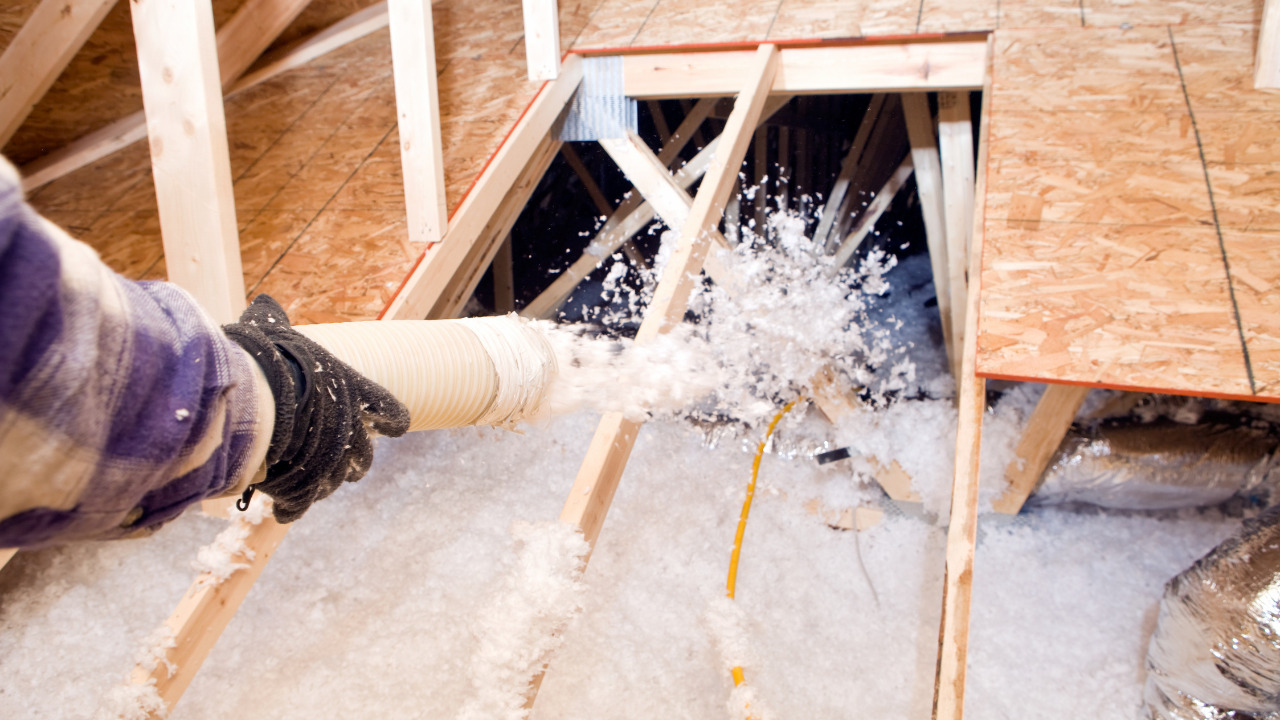Spray foam insulation might sound complex, but it’s actually a nifty way to keep your home cozy and energy-efficient. It’s like a magic blanket that seals up all the little cracks and crevices in your walls, ceilings, and floors. This article will break down what spray foam insulation is, how it works, its types, benefits, and potential considerations.
Table of Contents
What is Spray Foam Insulation?
Spray foam insulation is a material that expands when sprayed, filling gaps, and forming an airtight seal. It’s made of two main components, isocyanate and polyol resin, which mix on-site and react to create the foam. Once sprayed, it expands and hardens into a durable insulating layer, effectively preventing air leakage and providing thermal resistance.
How Does it Work?
When the spray foam is applied, it expands to about 30-60 times its liquid volume. It adheres to surfaces, filling tiny openings, and then hardens into a solid cellular structure. This process creates a barrier that stops air infiltration, heat loss, and even helps block outdoor noises from entering your home.
Types of Spray Foam Insulation
Open-Cell Spray Foam: This type is spongier and less dense. It’s great for soundproofing and has some flexibility, but it’s not as effective at blocking moisture.
Closed-Cell Spray Foam: It’s denser and more rigid, providing better insulation. It’s also a moisture barrier and can add structural strength to walls.
Benefits of Spray Foam Insulation
Energy Efficiency: By sealing off air leaks, spray foam insulation helps reduce energy bills by maintaining a consistent indoor temperature.
Improved Air Quality: It blocks out allergens, pollutants, and outdoor contaminants, enhancing indoor air quality.
Longevity: When properly installed, it can last for decades without losing its effectiveness.
Structural Support: Closed-cell foam can add strength to walls, making them more resistant to wind and impacts.
Considerations Before Installation
Professional Installation: It’s advisable to have a trained professional install spray foam insulation due to the precise mixing and application requirements.
Cost: While it can save money on energy bills over time, the initial cost might be higher than traditional insulation methods.
Potential Health Concerns: During installation, the chemicals in spray foam can emit strong odors and may cause skin or respiratory irritation, so proper safety measures are crucial.
Application Process
Professionals apply spray foam insulation using specialized equipment. They start by preparing the area and protecting surrounding surfaces. Then, the two components, isocyanate and polyol resin, are mixed and sprayed onto the designated areas. The foam expands rapidly, filling gaps and adhering to surfaces. Afterward, it cures and hardens within a short period, typically a day or two.
Additional Benefits
Moisture Control: Closed-cell foam’s dense structure acts as a moisture barrier, preventing mold and mildew growth by keeping moisture out.
Environmental Friendliness: Spray foam insulation can contribute to reducing energy consumption, thereby lowering greenhouse gas emissions.
Space Saving: Its ability to seal tighter than traditional insulation methods saves space, allowing for thinner walls while maintaining high insulation levels.
Conclusion
Spray foam insulation is a smart investment for improving home comfort and energy efficiency. It forms a protective barrier, reducing energy costs and enhancing indoor air quality. However, professional installation and awareness of potential health concerns are important aspects to consider before deciding on this insulation method.
In essence, spray foam insulation is like a shield for your home, keeping it warm, cozy, and efficient year-round.





